Communication Lesson Plan
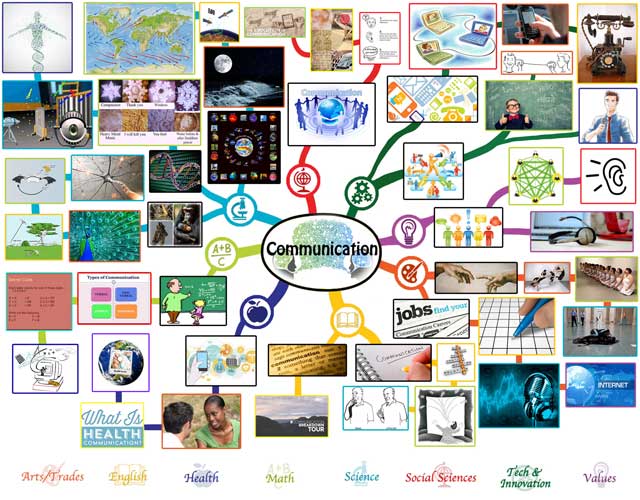
Lesson Plan Mindmap for “Communication” – Click to Enlarge
CLICK ICONS TO JUMP DIRECTLY TO EACH SUBJECT ON THIS PAGE








COMMUNICATION LESSON PLAN
This page is a free-shared lesson plan archive for teaching all educational subjects within the context and theme of “Communication.” It is purposed for use in community education environments, homeschool environments, traditional schooling environments, or as a supplemental and fun addition to any education program. As part of the complete Education for Life Program, this lesson plan is specifically designed to work in conjunction with the other components: Foundations of Teaching, Curriculum, Teaching Strategies, Learning Tools and Toys, Evaluation Model, and The Ultimate Classroom. If you’d like to learn how all these components work together, click here. Click here for the specifics focused on just using the lesson plans:
CLICK HERE FOR A DETAILED TUTORIAL ON HOW TO USE THIS LESSON PLAN
NOTE: The colors are provided as a possible linear progression (red/easiest to violet/most challenging) for people that might prefer a more linear structure. Our core philosophy, however, is that through creativity every color can be made easy or challenging for any learning level.
RELATED PAGES (mouse-over for descriptions and click for complete pages)
EDUCATION OVERVIEW | HOW TO USE THIS COMPONENT | OUR OPEN SOURCE PURPOSE
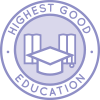
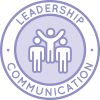
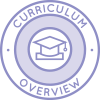
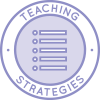
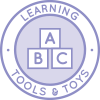
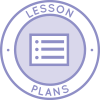
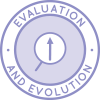
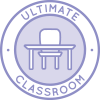
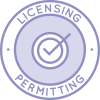

WAYS TO CONTRIBUTE TO EVOLVING THIS EDUCATION PROGRAM WITH US
SUGGESTIONS | CONSULTING | MEMBERSHIP | OTHER OPTIONS
A NOTE ABOUT ALL ONE COMMUNITY LESSON PLANS
The One Community lesson plans are intentionally designed for use in ANY educational environment and with ALL educational, cultural, religious/spiritual, and philosophical approaches to teaching and learning. They are designed without an ideological approach and specifically so they can be adapted to include the views, preferences, methodologies, and/or ideologies preferred by different parents and teachers.
For maximum flexibility and adaptation, they are also designed to be combined to teach multiple subjects at the same time. Doing this increases the creativity, effectiveness, and fun of your learning environment. Once we are on the property and operating our version of the complete school and Education for Life program, we will be adding video examples of how to combine the lessons. In the meantime, visit the Teaching Strategies page for a list of suggestions.
ARTS AND TRADES
CLICK HERE FOR THE COMPLETE SUBJECT OUTLINE FOR ARTS & TRADES
* Please note that anything with an asterisk is just a suggestion. The diversity of options with asterisks are interchangeable and purposed to stimulate your own ideas. Any one of these suggestions could be replaced with a written paper, any form of art project (drawing, painting, music, paper mache, clay, wood, knitting/embroidery, metals, etc. etc.), an experiment, a presentation, a mindmap, a computer program, a web design project, a piece of poetry or a song, an interpretive dance or play, a group project, or anything else. What we feel is most important is that both the Learner and the Teacher agree on an exercise/activity they both feel would be maximally engaging, fun, and effective. If you come up with an idea we haven’t already thought of, please share it with us.
ENGLISH
CLICK HERE FOR THE COMPLETE SUBJECT OUTLINE FOR ENGLISH
Note: Any language can be substituted for English. The subject is listed here as “English” because that is the primary language of most of the people on the team, and the official language of the country we’re building our initial location in.
 | TEACHING ENGLISH WITHIN THE CONTEXT OF COMMUNICATION |
 | - Talk* about the types of communication you already use and/or are learning and why each is important/useful/fun for you.
- Read a story out loud* (or chapter if it is a long book) that you like that is about communication and then explain why you chose it and why you like it.
- Choose a yellow level communication topic and create a presentation on that subject.
- Present a prose* work with the theme of communication in front of a small to medium sized group and create a fun way for them to communicate feedback to you about your presentation.
- Learn* the basics of communicating with sign language well enough to hold a basic conversation with someone who uses sign language.
- Create an investigative report* on the history of the allowance and repression of communication over the last 25-50 years in any country of your choice.
- Write a history* of worldwide communication focusing on what you consider to be the 10 major elements that increased worldwide communication and why those would be the top 10 factors. Then, if possible, create a solution* to increase communication positively even more using one or more of those elements, or a new element of your creation.
|
 | Linguistics
- Learn 5+ words for different communication-related concepts.
- Read a short story about communication. Write a list* of new words you learned, and use those words to create sentences* related to the short story.
- Watch a documentary about communication (e.g. languages, technology, physiology), possibly one aimed for a younger audience. Create a story book for younger children* based on what you learned, including pictures, new words and full sentences.
- Read a piece of non-fiction about communication or a related topic. Write a report* about what you learned from the piece.
- Explore different types of communication in writing (ie: poetry, scientific, narrative, short story), and choosing your favorite type, research some existing pieces and then create your own piece*.
- Explore the complete history of and writings about communication words.
- Carry out research on one aspect of communication you would like to raise awareness about. Find a documentary and plan a screening and discussion session*. Record the discussion, including feedback, and write a reflective piece* about your experience of hosting the session and thoughts about the issue.
|
| CLICK HERE TO EMAIL US IF YOU HAVE AN IDEA TO ADD TO THIS SECTION |
* Please note that anything with an asterisk is just a suggestion. The diversity of options with asterisks are interchangeable and purposed to stimulate your own ideas. Any one of these suggestions could be replaced with a written paper, any form of art project (drawing, painting, music, paper mache, clay, wood, knitting/embroidery, metals, etc. etc.), an experiment, a presentation, a mindmap, a computer program, a web design project, a piece of poetry or a song, an interpretive dance or play, a group project, or anything else. What we feel is most important is that both the Learner and the Teacher agree on an exercise/activity they both feel would be maximally engaging, fun, and effective. If you come up with an idea we haven’t already thought of, please share it with us.
HEALTH
CLICK HERE FOR THE COMPLETE SUBJECT OUTLINE FOR HEALTH
 | TEACHING HEALTH WITHIN THE CONTEXT OF COMMUNICATION |
 | - Explore & discuss* healthy ways to communicate your physical & dietary needs and desires.
- Create a collage* of healthy ways to communicate your emotions & express your emotions and desires with others.
- Ask 10 people what they feel are 5 attributes of healthy communication & present your findings. Write a short paragraph* about any patterns or conclusions you find.
- Research and find 5-10+ videos/documentaries that you find interesting (total of 2 hours minimum length) that relate to healthy vs non-healthy communication styles/practices and watch them. Create a short report or presentation* to explain your conclusions to others on what you believe to be healthy / non-healthy communication based on what you agreed/disagreed with in the presentations. Indicate why you feel that way using examples from your own experiences if suitable.
- Many people have a very high level of belief that their particular health practices are what they consider to be the “best.” Analyze the various methods that people currently use to communicate info in the health world & determine what you feel would be the best method of communication to communicate new info to someone with different beliefs about what is healthy. Write a blog* describing why you would choose that method and what you feel makes it more appropriate for disseminating information to someone with strong & opposing health beliefs.
- Choose a blue level health bullet and create a communication method containing the information about health that you wish to convey and present* it to people with opposing health beliefs / values. Poll them for their reactions. Ask for their suggestions as to how you could improve the presentation to them as a target audience.
- Consider the top world health issues on the planet today and research / choose one that you feel most passionate about that you feel has a viable solution. Create a “PR Campaign”* that you feel will not only communicate the issue but also inspire / motivate others to take action on the solution you propose & have a “viral” sharing effect. After the campaign is launched, get any feedback necessary and make any changes needed to make the campaign even more effective.
|
| CLICK HERE TO EMAIL US IF YOU HAVE AN IDEA TO ADD TO THIS SECTION |
* Please note that anything with an asterisk is just a suggestion. The diversity of options with asterisks are interchangeable and purposed to stimulate your own ideas. Any one of these suggestions could be replaced with a written paper, any form of art project (drawing, painting, music, paper mache, clay, wood, knitting/embroidery, metals, etc. etc.), an experiment, a presentation, a mindmap, a computer program, a web design project, a piece of poetry or a song, an interpretive dance or play, a group project, or anything else. What we feel is most important is that both the Learner and the Teacher agree on an exercise/activity they both feel would be maximally engaging, fun, and effective. If you come up with an idea we haven’t already thought of, please share it with us.
MATH
CLICK HERE FOR THE COMPLETE SUBJECT OUTLINE FOR MATH
 | TEACHING MATH WITHIN THE CONTEXT OF COMMUNICATION |
 | - Pick a type of communication and count* how many times that type of communication is being used in the room you are in.
- Count* how many types of communication you find in your environment.
- Create a chart* showing how many times you, or someone else, uses a type of communication of your choice, throughout an hour, or a day.
- Write out a math problem* for one of the orange level concepts and teach someone*, using a communication style other than speaking, the concepts they need to learn to be able to solve the problem.
- Using a form of communication other than speaking or writing, teach* a yellow level concept to others.
- Identify 20 different types of communication and create a proportional analysis* of these types of communication in 5 unique types of environments. (work, school, home, etc.)
- Create a new form of communication/ “unbreakable” code* using blue level concepts to represent words or letters and create a key for it (trig function =__, addition= __, solve subtraction problems to get some of the letters, etc). Write out a two paragraph message and teach someone how to solve it*.
- Do an in depth study of how mathematics is integral in 20 different fields/technologies within communications and forms of communication, including significant breakthroughs in the history of communication and create a presentation* to share your work/results.
- Choose a communications field that you feel is heavily dependent on math, and create an argument for why it is dependent on math. Create an open source tutorial* for the math components of this field that will benefit people that are in that field and interested in that field.
|
| CLICK HERE TO EMAIL US IF YOU HAVE AN IDEA TO ADD TO THIS SECTION |
* Please note that anything with an asterisk is just a suggestion. The diversity of options with asterisks are interchangeable and purposed to stimulate your own ideas. Any one of these suggestions could be replaced with a written paper, any form of art project (drawing, painting, music, paper mache, clay, wood, knitting/embroidery, metals, etc. etc.), an experiment, a presentation, a mindmap, a computer program, a web design project, a piece of poetry or a song, an interpretive dance or play, a group project, or anything else. What we feel is most important is that both the Learner and the Teacher agree on an exercise/activity they both feel would be maximally engaging, fun, and effective. If you come up with an idea we haven’t already thought of, please share it with us.
SCIENCE
CLICK HERE FOR THE COMPLETE SUBJECT OUTLINE FOR SCIENCE
 | TEACHING SCIENCE WITHIN THE CONTEXT OF COMMUNICATION |
 | Life Sciences- People communicate by talking and using body movements, like pointing. Talk about* how other animals and insects communicate. If you are in a group with other students, each student can pick 1-3 animals and one insect to tell others about.
- One special type of communication animals and insects use is when they are trying to attract a partner. Explore 2 animals/insects in at least 3 very different environments and come up with a way to communicate* to others what those 6 creatures do to communicate that they are looking for a partner.
- Compare and contrast animal ‘predator alarms,’ which are how animals communicate when a predator is near, in three different ecosystems and make a video* or short speech* about what you learned.
- Study how echolocation/ sonar communication works in 4 very different species and what each uses it for. Create a project* that shows the similarities and differences.
- Study the internal biology of 2 different kingdoms of life and how the different components of living organisms communicate with each other. Give a presentation*, noting 30 similarities and 30 differences of communication styles/systems between the two kingdoms.
- Do an in depth analysis of communication among 50+ species within an ecosystem of your choice and create an implementable strategy* for how humans learn from these communications to improve an aspect of your community or country.
- Write an in-depth proposal* on all of the ways DNA ‘communicates,’ including leading to replication of genetic features, focused on what we can learn from these ‘communications’ that we can apply to make an improvement in the field of genetics, biology, physiology, or another life sciences related field.
- Analyze and create a 5 year strategy* for integrating and implementing a beneficial biological communication component within a specialized field in the violet section into human communication.
|
 | Physical Sciences- Imagine you are a molecule in each state of matter and act out* how/what you would be communicating to the other molecules in your group (ex: if you were inside ice, water, and water vapor).
- Get in a group of four if possible. Have each person in the group choose a different one of the following: energy, light, magnetism, or electricity. Have each person research and then briefly explain to the group* how their chosen topic can or can not be considered to use or to be a form of communication based on what their research discovered.
- Research and share* 10 specific different ways humans give each other information about one or more of the yellow level physical science concepts (ex: write out some specific equations, name specific resources for information, etc.)
- Study Dr. Emoto’s water crystal experiments and create an argument* for whether or not there is some sort of communication with and/or between the water particles.
- Do an in depth analysis of double slit experiments and create an argument for whether or not consciousness is communicating with the particles, and use the evidence in the studies to back your position. Then, create your own experiment* that also produces results that support your argument.
- Write an in-depth proposal* on all of the ways electrical, magnetic, and/or other ‘fields’ ‘communicate,’ focused on what we can learn from these ‘communications’ that we can apply to make an improvement in a physical sciences related field or in human communication.
- Study an organization of your choice that is currently having an impact worldwide in a violet level physical science field, and study that field from a communications perspective. Design a proposal* for that organization on how they could improve human global life positively by implementing a strategy based on communication principles from that field, which you obtain from your research.
|
 | Earth Sciences- Pick 3 different earth science events (like storms, tides, eruptions, earthquakes, etc.) and embody each of the 3 events, pretending the event is communicating a message, and tell the message that event wishes to tell as you reenact it*.
- Imagine the moon’s effect on the earth’s tide was a conversation, and tell the story* the earth would tell the moon about the effect it has on it.
- Make a collage* of 10 different pictures of things that are measured using satellites and describe how satellite imagery worked to make the image.
- Choose 10 different ways humans communicate about weather patterns and 20 different ways those patterns communicate information to us. Make a visual display* of this.
- Choose 10 different Earth events and study what they meant to at least 5 different cultures and compare those meanings to what we believe they mean scientifically today, and what, if anything, we could learn from the past cultures. Create a report* to share your findings with others.
- It could be said that outer space has communicated an immense body of knowledge to the scientific community. Write 30 examples and explain* for each how this communication has been made possible and how our ability to gather this has evolved over time.
- Study natural disasters that you believe the impacts on humanity could be minimized the most, and create a more effective way* to understand and use the communications the Earth gives about the natural event before it occurs and a communication method that could be implemented anywhere in the world as needed to evacuate/prepare people for it before it occurs.
|
| CLICK HERE TO EMAIL US IF YOU HAVE AN IDEA TO ADD TO THIS SECTION |
* Please note that anything with an asterisk is just a suggestion. The diversity of options with asterisks are interchangeable and purposed to stimulate your own ideas. Any one of these suggestions could be replaced with a written paper, any form of art project (drawing, painting, music, paper mache, clay, wood, knitting/embroidery, metals, etc. etc.), an experiment, a presentation, a mindmap, a computer program, a web design project, a piece of poetry or a song, an interpretive dance or play, a group project, or anything else. What we feel is most important is that both the Learner and the Teacher agree on an exercise/activity they both feel would be maximally engaging, fun, and effective. If you come up with an idea we haven’t already thought of, please share it with us.
SOCIAL SCIENCES
CLICK HERE FOR THE COMPLETE SUBJECT OUTLINE FOR SOCIAL SCIENCES
 | TEACHING SOCIAL SCIENCES WITHIN THE CONTEXT OF COMMUNICATION |
 | - With a mentor, discuss* social skills and what types of communication are appropriate in different situations.
- Make a list* of the different types of communication you use with the different people in your life, including people in your family and outside of your family. Also write a few sentences about any patterns you may find.
- Learn about what effect(s) communication has in groups and practice working in a group using effective group communication by doing a group project* about the communication methods of one ancient civilization of your group’s choice. Have your group teach another group what they learned.
- Pick one or more cultures of your choice and study how their language and written communication began and developed over time, and any significant parts of their history that impacted the language. Create a fun way to teach* what you learned to others.
- Research the blue level topic related to communication that you find most interesting, and give a 5 minute persuasive speech* on your findings to an audience that you feel it will have a positive impact on.
- Study the methods of communication within the branches of government for the country you currently live in and identify the areas that appear to you to be most and least effective. Create a solution for the areas that require improvement and, if possible, make a presentation* of your assessment and proposed solutions for a person or group that may be able to implement your ideas.
- Choose a communication-related violet-level social sciences topic and do an in depth analysis of it from a global impact perspective, creating and implementing a strategy* to communicate the topic to a broad global audience in a way you feel will have a large positive impact on the planet.
|
 | Foreign Languages
(Each of the following is to be completed in the foreign language(s) being studied)
- Learn 5+ words for different communication-related concepts.
- Read a short story about communication. Write a list* of new words you learned, and use those words to create sentences* related to the short story.
- Watch a documentary about communication (e.g. languages, technology, physiology), possibly one aimed for a younger audience. Create a story book for younger children* based on what you learned, including pictures, new words and full sentences.
- Read a piece of non-fiction about communication or a related topic. Write a report* about what you learned from the piece.
- Explore different types of communication in writing (ie: poetry, scientific, narrative, short story), and choosing your favorite type, research some existing pieces and then create your own piece*.
- Explore the complete history of and writings about communication words.
- Carry out research on one aspect of communication you would like to raise awareness about. Find a documentary and plan a screening and discussion session*. Record the discussion, including feedback, and write a reflective piece* about your experience of hosting the session and thoughts about the issue.
|
| CLICK HERE TO EMAIL US IF YOU HAVE AN IDEA TO ADD TO THIS SECTION |
* Please note that anything with an asterisk is just a suggestion. The diversity of options with asterisks are interchangeable and purposed to stimulate your own ideas. Any one of these suggestions could be replaced with a written paper, any form of art project (drawing, painting, music, paper mache, clay, wood, knitting/embroidery, metals, etc. etc.), an experiment, a presentation, a mindmap, a computer program, a web design project, a piece of poetry or a song, an interpretive dance or play, a group project, or anything else. What we feel is most important is that both the Learner and the Teacher agree on an exercise/activity they both feel would be maximally engaging, fun, and effective. If you come up with an idea we haven’t already thought of, please share it with us.
TECHNOLOGY AND INNOVATION
CLICK HERE FOR THE COMPLETE SUBJECT OUTLINE FOR TECHNOLOGY AND INNOVATION
 | TEACHING TECHNOLOGY & INNOVATION WITHIN THE CONTEXT OF COMMUNICATION |
 | Technology- Talk* about 5 different ways that you use technology to communicate with your friends, family, community, etc.
- Make a project* about your favorite ways to communicate with technology & use your #1 favorite form of communication as the basis of the project.
- Ask people that are older than yourself to explain to you their viewpoint of the technological changes that have taken place in communication. Find one person to talk about the last 5 years, another for the last 10 years, another for the last 20 years, and another for the last 40 years. Make a short YouTube video* where you explain any similarities & differences between opinions about the technological changes that those individuals felt were beneficial and not beneficial. Add in your opinion & why you feel that way.
- Create an app* that will improve communication between people and/or groups.
- Research the top advancements in communications technology over the last 5 years and technologies that are in the works and create a fun way* to communicate/teach what you learned to others, including any creative ideas of things you would like to see in the future.
- Create a new communication technology or technology product* that would enhance the lives of others and either get it ready for sale, or find a way to get it funded and donated to those in need of it.
- Research the current top communications technology companies of the world and assess what it is they are offering and what they are doing or could do that would make the largest positive impact you can come up with for communication worldwide. Create a presentation* for the company of a proposal you have for the impact and get one or more of the companies to implement your idea if possible.
|
 | Innovation- Discuss* your experience and memories of learning to communicate.
- Name 5-10 creative ways to communicate. Discuss* which ones are your favorite and why.
- Create a ‘new’ way to communicate and use it to communicate one chapter/scene of your favorite book/story/play.
- Create a new written ‘language’* and use it to translate one page of your favorite book and then read aloud your translation.
- Create 10+ questions and use them to interview 10 people to demonstrate your comprehensive knowledge of eye accessing cues and sub-modalities. Choose and create* the best way to communicate to others the information from your experiment and the results of it, and how this information could be useful to others.
- Study 20 people that you believe are top communicators and write out a strategy that highlights the techniques that you believe make them most effective, and create a strategy* for teaching others these techniques that helps them communicate more effectively.
- Study the top organizations of your choice that you feel have the greatest innovative offerings to the world and create and propose to them a strategy* for how these organizations could communicate with each other about their progress, findings, resources, etc., and what the benefits to them and to the world would be if they did so.
|
| CLICK HERE TO EMAIL US IF YOU HAVE AN IDEA TO ADD TO THIS SECTION |
* Please note that anything with an asterisk is just a suggestion. The diversity of options with asterisks are interchangeable and purposed to stimulate your own ideas. Any one of these suggestions could be replaced with a written paper, any form of art project (drawing, painting, music, paper mache, clay, wood, knitting/embroidery, metals, etc. etc.), an experiment, a presentation, a mindmap, a computer program, a web design project, a piece of poetry or a song, an interpretive dance or play, a group project, or anything else. What we feel is most important is that both the Learner and the Teacher agree on an exercise/activity they both feel would be maximally engaging, fun, and effective. If you come up with an idea we haven’t already thought of, please share it with us.
VALUES
CLICK HERE FOR THE COMPLETE SUBJECT OUTLINE FOR VALUES
 | TEACHING VALUES WITHIN THE CONTEXT OF COMMUNICATION |
 | - Share* what is important to you about communication.
- Choose and use 5 different ways to communicate the same message and then communicate* which one of the 5 was the most fun for you or that you liked best.
- Think of 10 different ways to let someone know you want to talk to them and try each them out with 10 different people. Create a chart* that shows the results of this and include your rankings of which communication way works best for you.
- Spend a day observing and identifying 25 different patterns of communication your friends and family use and rank them from most effective to least effective. Apply the top 5 in your own life for at least 5 days and then share* your results.
- Spend 2 days observing and identifying 30+ different patterns of communication you use with friends and family and rank them from most effective to least effective. For the rest of the week, focus on using the top 5 and minimizing the bottom 5. In addition, if you like, create a new way* to communicate using a combination of the top 5-10. Create an ‘effective’ way to share your results.
- Choose a culture, a company, and a product that you feel values/exemplifies communication more than all others. Defend your reasoning for your selections. Create a hypothetical amalgam* of these three choices and explain how such a creation could change the world.
- Perform a comprehensive review of communication products on the market today and choose the most powerful offerings from each of the top 10 and create a new helpful communication product* that would benefit humanity, and open source share it in a way that makes it accessible to the most possible people.
|
| CLICK HERE TO EMAIL US IF YOU HAVE AN IDEA TO ADD TO THIS SECTION |
* Please note that anything with an asterisk is just a suggestion. The diversity of options with asterisks are interchangeable and purposed to stimulate your own ideas. Any one of these suggestions could be replaced with a written paper, any form of art project (drawing, painting, music, paper mache, clay, wood, knitting/embroidery, metals, etc. etc.), an experiment, a presentation, a mindmap, a computer program, a web design project, a piece of poetry or a song, an interpretive dance or play, a group project, or anything else. What we feel is most important is that both the Learner and the Teacher agree on an exercise/activity they both feel would be maximally engaging, fun, and effective. If you come up with an idea we haven’t already thought of, please share it with us.

OTHER RESOURCES
We're building a resource section. Click here if you have a suggestion or resource for this page.
OPEN SOURCE SUBJECT RESOURCES (click icons for complete pages)



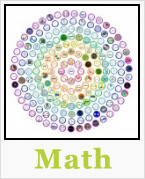



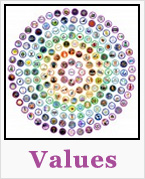
OPEN SOURCE CURRICULUM OUTLINES (click image for summaries and links to complete pages)
CARE
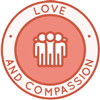
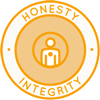
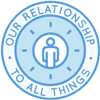
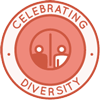
SHARE
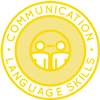
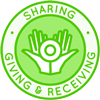
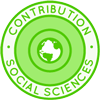
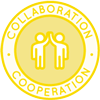
PLAY
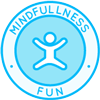
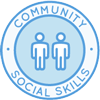
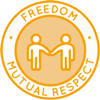
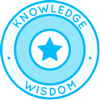
OPEN SOURCE TEACHING METHODOLOGY SUMMARIES
Montessori | Waldorf | Orff | Reggio | Multi-Intelligence | Bloom's Taxonomy | Study Tech | I-WE
INDEX OF ALL THE ONE COMMUNITY OPEN SOURCE LESSON PLANS

Click this image for the Lesson Plans for Life page with links to the rest of the lesson plans
THE WORLD'S LARGEST ONLINE FREE EDUCATION RESOURCE ARCHIVE
RELATED CONTENT AND OTHER RELATED RESOURCES
We're building this resource section. Click here if you have a suggestion or resource for this page.





























 One Community
One Community



